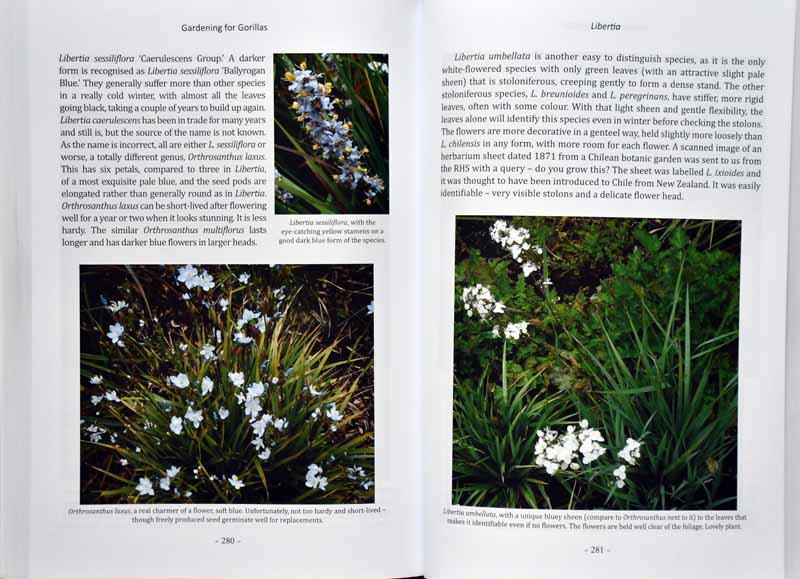Gardening for Gorillas
It is time for those of us who complain about our garden pests, slugs and snails, greenfly, blackfly and aphids in general, vine weevils, leatherjackets, rabbits, foxes and badgers, even pigeons and pheasants to put things into some perspective and a reading of Stephen Butler’s book, Gardening for Gorillas, will go some way towards bringing balance to our outlook on the creatures which share our garden with us.

Stephen is recently retired having spent almost his entire career as the lead horticulturalist at Dublin Zoo – more appropriately referred to as The Zoological Gardens in the context of this book. What is significant is that his career spanned a time of great change in how zoos have developed the past forty years or so. There was a worldwide change in attitudes towards the keeping and displaying of animals. The standards of animal captivity fifty years ago might well be regarded as animal cruelty today or, at least, as being less than what is best for the animal. The intervening years have seen a stronger concern for animal welfare and great changes in animal husbandry with better design in housing, enclosures and exposure to public viewing. The essence of the zoo is allowing access to the public to see animals they would not otherwise see – though, of course, there is also the zoo programmes of conservation of rare breeds with the possibility of reintroduction to the wild at some stage. For most of us, this latter is a behind the scenes activity which we don’t see and we are more involved with the public face of the zoo and the animals there. It is at this interface between animals and public that Stephen Butler has worked on for almost his entire career, a development of an environment which will enrich the lives of these captive animals – and survive them – and which will also be attractive and appealing to the visiting public, a zoological garden! It was a change from gardening with plants to gardening for animals.
These recollections of the author’s time at Dublin Zoo range from the early days, first successes and first small projects through the development of an appreciation of the very important part horticulture plays in providing suitable surroundings for animals and the contribution it makes to the enjoyment of the visitor’s experience to the nowadays acceptance that horticulture is given a central place in the planning and implementation of all new projects in the zoo. This story is illustrated by detailed accounts of a range of projects in the zoo: the development of areas for the Asian Elephants, of the African Savanna, the Gorilla Rainforest, habitats for the Asian lions and Sumatran tigers, the Orangutan Forest and the Flamingo Lagoon and Sea Lion Cove and others, an enormously varied list of challenging projects and each brought its own set of challenges when it came to the selection of plants. Central to each selection of plants was concern for the health of the animals so plants which could do harm (poisonous plants) had to be avoided and then there was the search for plants which the animals would not destroy – a rather odd balancing act when one thinks about it, selecting plants which are safe for the animals and also safe from the animals.


The various projects are recalled in a relaxed conversational style, regularly flavoured with anecdotes and humorous memories – and there were plenty of them – and with excellent descriptions of the plants selected for each project. The interaction of animal with plants is very interesting and enough to make the ordinary gardener thankful that the creatures in the normal garden are comparatively very easy to live with.

Best wishes to author Stephen, a colleague of many years in the Irish Garden Plant Society, and best wishes to him in his retirement. Though I have heard of his work on many occasions over the years, it was a pleasure to have a record of his time at Dublin Zoo where he certainly made a significant contribution to Zoological gardening!
[Gardening for Gorillas, Stephen Butler, Orla Kelly Publishing, 2022, Softback, 369 pages, €35, ISBN: 978-1-914225-94-9. The book is available at Dublin Zoo or directly from the author’s website, Gardening for Gorillas ]
